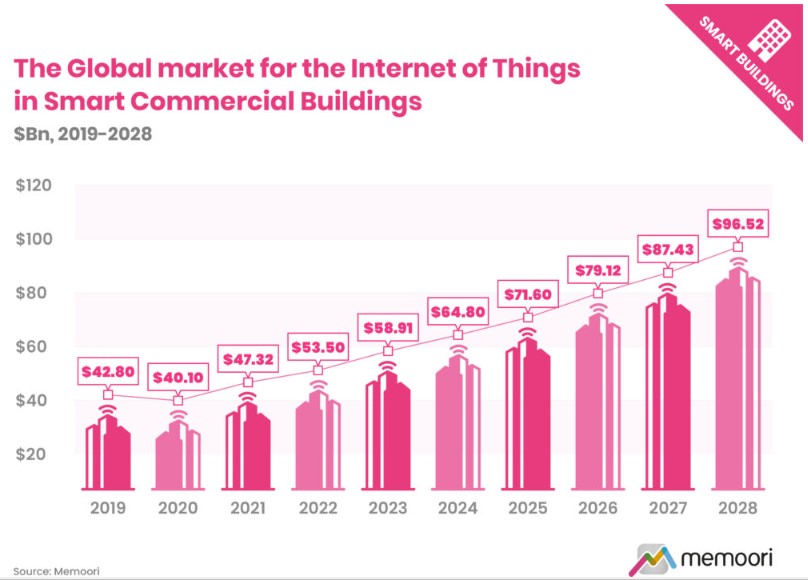Latin America. The BIoT market grew to $53.5 billion in 2022, up 13% from 2021, according to analyst memoori research.
The yield was slightly below the 13.8% forecast for the year due to several factors, including a slower-than-anticipated recovery of the overall economy, lack of chipsets and disrupted supply chains.
Memoori forecasts that the BIoT market size will grow at a CAGR of 10.33% to $96.5 billion between 2022 and 2028.
What is driving the adoption of the BIoT market? Real estate stakeholders are investing not only to improve the sustainability credentials of their assets, but also to improve their performance, which translates into better rents and returns. With rising energy costs expected to continue to rise, the focus on energy efficiency technologies and sustainable solutions is likely to remain a major priority for many companies.
What challenges and barriers does the BIoT market face? Cybersecurity is a crucial consideration for the growing number of smart buildings, which are increasingly susceptible to cyber attacks. Smart building systems and devices often lack dynamic patching capabilities, and facilities management teams may lack the IT skills needed to manage cybersecurity.

The building sector is moving towards sustainable development and the reduction of energy consumption. EIA's 2018 CBECS Consumption and Expenditure Survey found that commercial buildings consumed 12% less energy per square foot of floor space in 2018 than in 2012. However, the construction sector still does not reach the targets required for future sustainable development, as buildings and building construction contribute to a third of global energy consumption and almost 40% of CO2 emissions.
To achieve net zero by 2050, building owners and operators must redouble their efforts on new construction and retrofits. The IEA is now calling for an increase in modernisation rates of 2.5% per annum by 2030, up from less than 1% today.
The smart building startup landscape is also expanding rapidly, with a 20% increase in the number of new entrants founded since 2021. Consolidation is expected in the broader platform space, but considerable market opportunities remain for cloud-based software offerings for specialized applications or vertical markets.
While the level of fragmentation in the BIoT market can act as a source of confusion and frustration for buyers, leading platform solution providers are beginning to emerge and the user base is likely to coalesce around a more limited number of platform providers.



























Leave your comment